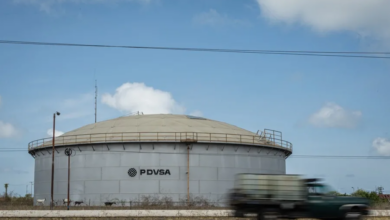United States and China face a debt crisis
Should we wait until the effects of the aggressive recovery policies fill the world with jobs, industry, and value?

Lee en Español: Estados Unidos y China: ¿en qué consiste la crisis de deuda?
First of all, a debt crisis occurs when a person, business, or country owes more money than it’s able to pay. Picture an economy of three agents: a bank that prints money, individual A who owns the land, and individual B that owns the technology. Agents A and B meet and conclude that together they could increase A’s land productivity with B’s machinery for mutual benefit, but both need oil to make the machines move and human work must be acquired from a different economy to create local growth.
In order to complete the transaction, A and B work together by creating a detailed production plan to create value and take it to the bank. The bank controls the money supply in that economy, and if it believes the plan is good enough, it will print money so A and B can go to the other economy and purchase oil and labor.
By creating new money out of trust, the bank purposely lowers the price of every bill it emits with the expectation that serious business will be carried out, expecting value creation to back its currencies cost and making the local money more valuable in comparison to other economies after the transaction concluded.
In a good scenario, A and B created AB Corp and took the debt to leverage their production. Then the crops grew according to the plan and more money entered their economy, thus paying the bank and achieving their objectives. Worst case scenario, an undetected plague arrives as the bank lends AB Corp the money and the entire production is lost. A, B, and the bank would have shattered their economy.
Chinese scenario is located in the midst of an expanding economy where the state created incentives for privates such as AB Corp to ask for money. China faces debt equaling 300% of its GDP, as corporate debt alone stands at 18 trillion dollars or 170% of the GDP.
United States’ scenario is a bit more complex. Since the Federal Reserve exists, the North American country works as the bank of the world as the dollar is the global economic reference following Bretton Woods. Since the North American economy depends so much on trusting other countries development through funding, it will always be printing new money.
As previously stated, the global economy depends on companies such as AB Corp that have a plan to create value; capitalism’s success depends upon their achievement. If countries such as China massively stop producing goods and services, it will affect the bond market (the way in which the United States captures foreign money) and money flow will stop. Just as the bad scenario of AB Corp, the economy could perish.
Seen this way, United States will always have more debt and their success depends directly on the developing nation’s ability to pay their interest. Therefore, concepts such as debt ceilings are being reconsidered in the American nation as it doesn’t respond to reality.
Good news comes from human’s nature. It’s known that the global economy is growing at an exponential rate and that every day new individuals enter the capitalist system. As a result, there is a positive tendency in consumption, which is directly linked to credit. You might think that in order to reduce debt –such as the case of a credit card- the solution is to spend less. But at international level, it’s not like that.
If China, the United States, and the rest of active economies keep spending money on infrastructure, development, and any kind of technology that creates value, then the economy will keep growing, as it will involve more people.
This perspective involves the notion that debt will always exist and that it’s necessary as it represents trust in humanity and that its increase is not as worrying as having solid sources of value creation.
In the core, the unresolved question is if either our global economy is based on empty consumption where no value is created out of the money exchanges, or if we are simply waiting until the effects of the aggressive recovery policies by world leaders fill the world with jobs, industry, and value. That’s the information that will let us know if we should worry right now.
Latin American Post | David Eduardo Rodríguez
Copy edited by Susana Cicchetto





